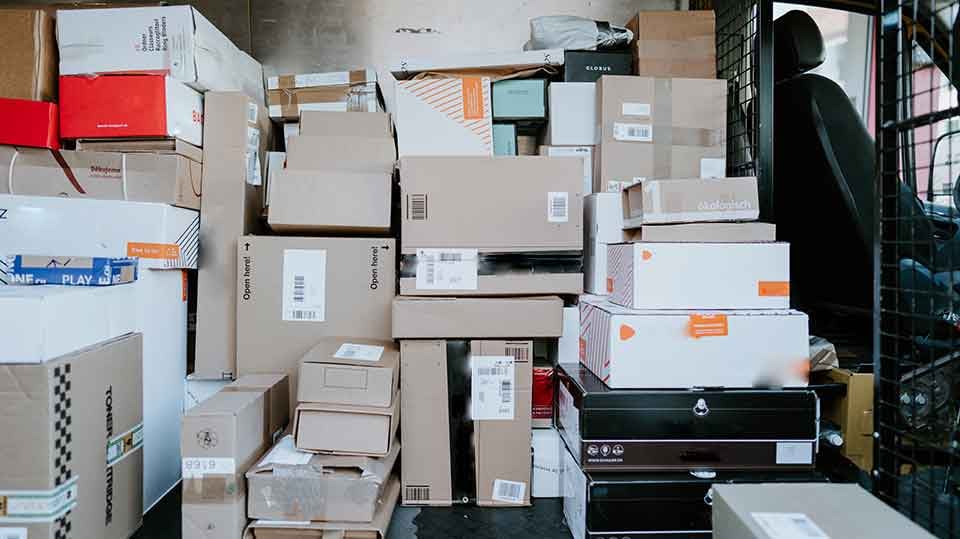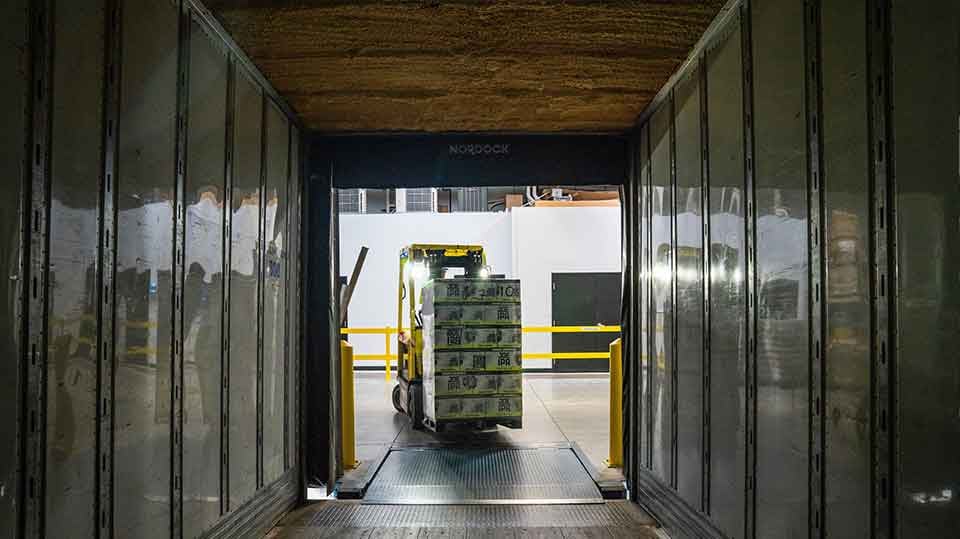
In the world of transportation, there are many variables to consider with each shipment. How the truck will be loaded is one of them.
Most trucks are packed with pallets of freight using a forklift. But some freight can’t be handled with a forklift, usually due to size or shape. Most of these items are loaded directly to the floor of the truck, a process called floor loading.
Understanding both methods, how they compare and their pros and cons will empower you to find the right loading method for your valuable shipments. At Anderson Trucking Service (ATS), we’ve been hauling truckloads of freight since 1955, and we’ve seen different loading methods in action. Our goal is to help you find what works best for you.
By the end of this article, you’ll be knowledgeable about floor and palletized freight loading. With this information, you’ll be able to make the best decision for every load.
How Do You Floor Load a Truck?
Floor loading is when the freight is packed on the floor of the truck instead of on pallets or dunnage.
When a truck is floor loaded, employees manually carry each item from the warehouse to the truck, and then unload the truck the same way. While dolly carts or other simple wheeled devices may be used, there are no forklifts or other heavy equipment involved.
Floor loading is most often used for bulky items that do not fit neatly on a pallet, like tires or carpet, or for smaller items (like packages). Each item is jigsawed into place, using all available space.
The only difference between floor loading and palletizing is how the freight is loaded and unloaded from the truck. Understanding the pros and cons of both methods will help you compare the two.
Advantages of Floor Loading Freight
Depending on the situation, floor loading may be the best option for your freight. The main advantages have to do with capacity, convenience and the type of commodity.
Better Fit for Unusual Shapes
Palletized freight is usually packed to the edge of the pallet or with a slight gap between the freight and the edge of the pallet. Large or oddly shaped objects don’t fit on pallets, and the tines of a forklift are harder to insert into a pallet carrying oversized objects.
Round objects, like barrels or spools, are also commonly floor loaded. They can be carried or rolled onto the truck for eye-to-the-side or eye-to-the-sky securement.
No matter the size or shape of your freight, pallets themselves take up space inside the truck, which can lead to decreased payload.
Increased Capacity
Because no space is occupied by pallets, floor loading comes with the possibility of increased capacity. Product can be snugly packed together with no gaps between units. Tightly packing the truck also stops freight from shifting or sliding during transit, sometimes eliminating the need for securement.
Freight that is floor loaded is stacked to the roof of the vehicle, with no room lost to pallets. While it may be possible to double stack very sturdy palletized freight, it’s much more common to stack barrels, rolls of carpet or large boxes to occupy every inch of a trailer.
In addition to the potential for increased capacity, shippers without forklifts can benefit from floor loading.
No Need for Heavy Equipment
With floor-loaded freight, every object is carried into the truck by hand or wheeled on a handcart or rolling platform. If there’s no forklift available, this may be the only option for packing the truck. However, companies that have regular shipments may benefit from investing in a forklift for the long term.
These are the reasons some shippers choose to floor load freight. Of course, it’s not the right choice for everyone.
Disadvantages of Floor Loading Freight
Floor loading is less common than palletizing freight. Most of the disadvantages have to do with the extra time required at pick up and delivery.
Labor Intensive
Each unit of floor-loaded freight must be individually handled during loading and unloading. Depending on the size of the object, some units may require multiple people to lift and carry. This is significantly more effort than forking full pallets into a truck.
Floor loading is also a physically difficult task, requiring repeated lifting and bending, and sometimes stacking things overhead. Before planning to floor load, make sure you have the appropriate staff available for the job.
Time Intensive
Carrying individual items into a trailer takes more time than using a forklift to load pallets.
- Forklifts are faster than pedestrians.
- They can carry more weight with every load.
- Forklifts don’t get tired or need breaks.
Floor loading means more time at both the point of origin and the destination. Due to the lost Hours of Service for the driver, plan to pay a detention fee to compensate the driver for their time. The detention fee will vary based on the length of the delay, but usually starts at $50-$75 per hour.
If you can make it work with your carrier, you may be able to have the trailer dropped at your location for packing or unpacking while the driver leaves the site and takes a required break. If the timing is right, this can give your employees extra loading time without requiring added fees.
In addition to concerns with time and labor, excess handling also increases the risk of dropping or bumping an object.
Risk of Damage
The extra handling and possibility of human error means floor-loaded freight has an added risk of damage. Floor loading is not suitable for fragile or delicate freight, which is better handled by a well-trained forklift driver following safe handling protocol.
Floor loading is one method of filling the truck. Comparing it to palletized loading will help you determine the best option for your load.
Advantages of Palletized Freight Shipping
Most freight is loaded to trucks on pallets. They are commonly available, and a lot of freight is already packed on pallets for handling in the warehouse. There are significant advantages for palletizing freight for shipment.
Faster Loading Time
The main benefit of loading palletized freight is time. Freight on pallets can be quickly picked up with a forklift and loaded or unloaded to the truck within the two hours budgeted by the carrier. Saving time also means saving money, in the form of accessorial charges from the transportation carrier and wages for staff.
Floor loading requires time, and heavy objects that require more than one person to lift also mean paying more than one person for the time it takes to load the truck.
Decreased Need for Staffing
Because palletized freight is not handled piece by piece, just a few individuals can load or unload an entire truck. This can save significant payroll costs — especially if the truck has to be loaded outside of regular business hours.
Time and cost savings can add up when using machinery to load freight. It can also save time when specifying the load.
Standard Sizing
Most palletized freight is no bigger than the size of a standard pallet. This helps both the shipper and the carrier understand exactly how much freight will fit on the truck, eliminating the possibility for surprises when the truck arrives on site.
Palletized freight is more common and has numerous advantages over floor loading. Shippers who use floor loading have determined that the disadvantages for them outweigh the advantages for their shipment.

Disadvantages of Shipping Palletized Freight
Palletizing freight means significant cost and time savings … but it isn’t right for every situation.
Wasted Space
Most palletized freight is packaged at the size of the pallet or slightly smaller. This can mean wasted space between each pallet. Depending on the shape of your freight, this can greatly diminish the capacity of the truck.
Oddly shaped objects, like doors or IBC liquid bulk containers, that don’t conform with the rectangular shape of a standard pallet, will have the most wasted space in the truck — which can have a significant impact on your costs if you need to book additional trucks.
The pallet itself can also make freight securement more difficult. Depending on the type of freight and if it can be strapped to the side of the truck, this can have a significant impact.
Unable to Block and Brace
Block and brace securement, which uses wooden blocks nailed to the floor to prevent objects from sliding, will stop pallets from sliding but will not keep the freight itself from moving around. If the freight isn’t securely attached to the pallet, it may slide around and be damaged during the shipment.
In addition to space and securement concerns, there’s also a monetary cost for palletizing freight.
Cost of Pallets and Material
During palletization, freight is stacked then secured to a wooden, metal or plastic pallet (usually with plastic wrap). While these materials are common in warehouses, they have to be sourced and paid for. The machinery used to wrap the pallet also must be purchased and maintained. Some companies, especially those who don’t often ship on pallets, may not want to take on these additional costs.
Experienced trucking companies are familiar with both floor-loaded and palletized freight. The most important thing is to communicate with them and make sure everyone is on the same page before the truck is en route.
Palletized vs. Non-Palletized Freight: Which Is Easier to Load?
Depending on what type of freight you are shipping, there are pros and cons for both palletizing and floor loading freight. The key to success is to communicate your preference to your carrier before the driver arrives on site.
Helping your carrier and driver understand your loading preferences will help them accommodate your request; the driver will show up on time and prepared, and they will plan the appropriate amount of time for your stop.
Communicate how you will load the truck so the carrier and driver can prepare:
- How much time they will spend on site
- What types of securement are available
- Any additional charges (accessorial charges billed before the shipment will be less than charges booked afterward)
When requesting a price quote, include your loading method (in writing) with the initial information. If you do not specify floor loading, most carriers will assume the freight is palletized.
If you are planning to ship palletized freight, use this free download to determine how many pallets you can fit on the truck. More information about all aspects of the trucking industry is available by subscribing to the ATS Learning Hub.






